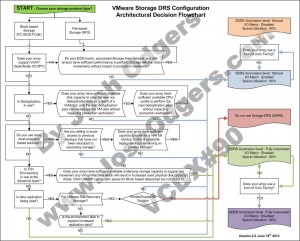I am very pleased to announce that I have decided to take on a new challenge and will be joining the innovative team at Nutanix starting July this year in the Solutions and Performance engineering team.
It was only a few short months ago when I first discovered what Nutanix was all about, after previously seeing the classic “No SAN” advertisements on various blogs and at VMworld in 2012, and embarrassingly I have to admit I did not make the time to look into the solution.
Since then, I have spent a lot of time looking into the Nutanix solution and have spoken to a number of people in the industry including several members of the Nutanix family. It has become obvious to me why Nutanix is one of the most successful and fastest growing start-ups in the industry, although im not sure I’d call Nutanix a “Start-up” any more.
The linearly scale out solution provided by Nutanix aligns perfectly with the virtualization best practices that most of us have known for many years, and combines PCIe SSD (Fusion-io) with SATA SSDs and high capacity SATA drives into a high performance , hyper-converged 2RU platform.
Over my many years in the industry I can recall countless scenarios where the Nutanix solution would have been a perfect fit, and solved numerous problems, both at the technical/architectural level and importantly at the business level for both SMB and Enterprise customers.
Now with the release of a wider range of Nutanix blocks including the NX-1000 and NX-6000, the solution is becoming more and more attractive.
In my role I will be part of the team who is responsible for creating high performance solutions and developing best practice guides, reference architectures and case studies for things like virtualization of business critical applications on the Nutanix platform.
A lot of people are already aware of how good the platform is for virtual desktops, but I am not only focused on showing how good the solution is for VDI, but for a wider range of workloads, including Business Critical Applications / server and Big Data workloads.
I am very much looking forward to being a significant part of this exciting company, which already boasts exceptional talent, including two VCDXs in Jason Langone @langonej & Lane Leverett @wolfbrthr . So I am very pleased to be working along side such talent and to be the third VCDX in the Nutanix family.
As I have been doing for the last year or so, I intend to continue to share my experience with the virtualization community via Twitter, Blogging, VMUGs etc, which will now include (but not be limited too) the Nutanix platform.
So stay tuned as the Nutanix team and I have a number of very interesting projects coming up in the next few weeks and months which I cant wait to share with you.
If your not already familiar with what Nutanix is all about, here are a couple of quick introductory YouTube videos which I highly recommend you take the time to watch (as I wish I had sooner!)
About Nutanix | How Nutanix Works | 8 Strategies for a Modern Datacenter



